How Hong Kong’s archiREEF is restoring our ocean’s coral reefs with technology
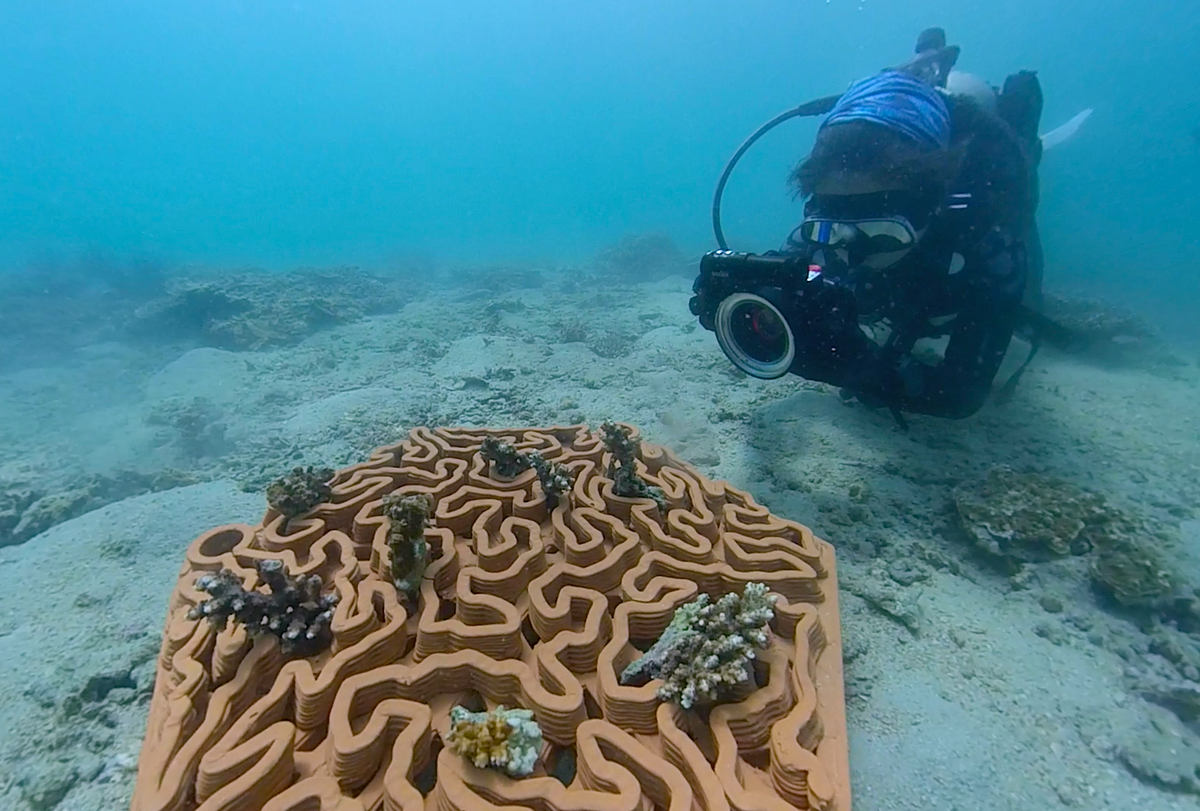
A few minutes every morning is all you need.
Stay up to date on the world's Headlines and Human Stories. It's fun, it's factual, it's fluff-free.
After attaining her diving license, Ph.D. student Vriko Yu spent two months diving underwater around Sai Kung in Hong Kong. It was unforgettable – in the worst way possible. Over the course of just two months, she witnessed a patch of coral reef disappear entirely.
“That was alarming because, even though I’ve [always been] studying science, when I look at climate change, I thought it takes decades to realize the damage. I just didn’t expect that that could happen in just a blink of an eye.”
Yu says the experience “implanted an idea in my heart – OK, is there anything that we could do?”
Thus, the beginning of a Hong Kong University research project working on ways to restore the disappearing coral reefs was born in 2016. That project became archiREEF, a company founded in 2020 that aims to tackle the issue of our degrading marine ecosystem by providing innovative and adaptive solutions. A core solution is the 3D-printed terracotta reef tiles that help restore corals and other marine life to endangered reefs.
TMS spoke with archiREEF’s co-founders, Vriko Yu, Dr. David Baker and Deniz Tekerek, about archiREEF’s goals and journey as an environmental startup.
archiREEF in Hong Kong
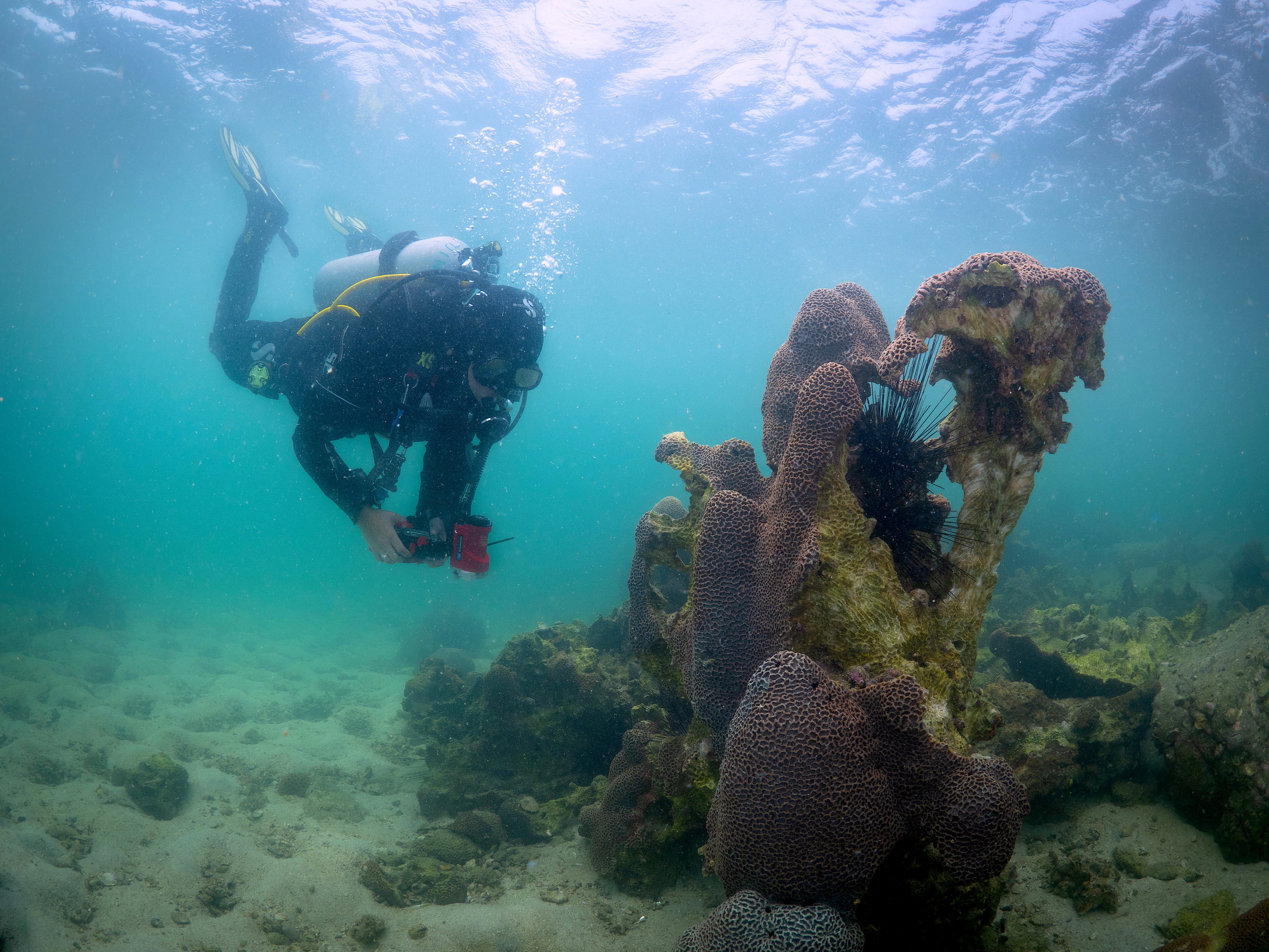
archiREEF was first contracted by the Hong Kong government to restore coral reefs within a marine park. However, the time it took to get things going due to bureaucracy meant an entire reef had disappeared before they could start the restoration.
Rising sea temperatures, a lack of substrate (the material at the bottom of the sea, providing nutrition) and bar erosion (the erosion of the extended sand body manipulated by tides) have all been obstacles for coral to regrow in its natural habitat – thus the need for action.
Coral needs a hard bottom to restore itself, as the corals like building upon coral skeletons and one another. However, storm surges that coat the reef with sand ultimately disrupt this natural restoration, as sand can harm coral by killing or burying it. So, archiREEF had to come up with a creative solution to combat this issue.
“Concrete is very alkaline, so it’s got a very high pH and lots of organisms don’t like to attach to it,” explains Dr. Baker. However, he was able to find a partner at HKU who had a 3D printer that could print terracotta clay that could be fired into ceramic. “Terracotta, in contrast, is very inert. It’s highly porous, it has a nice kind of rough surface structure and marine life just love attaching to it.”
Although using terracotta in marine biology is not particularly new, archiREEF has found an innovative way to repurpose the material for coral reef restoration.
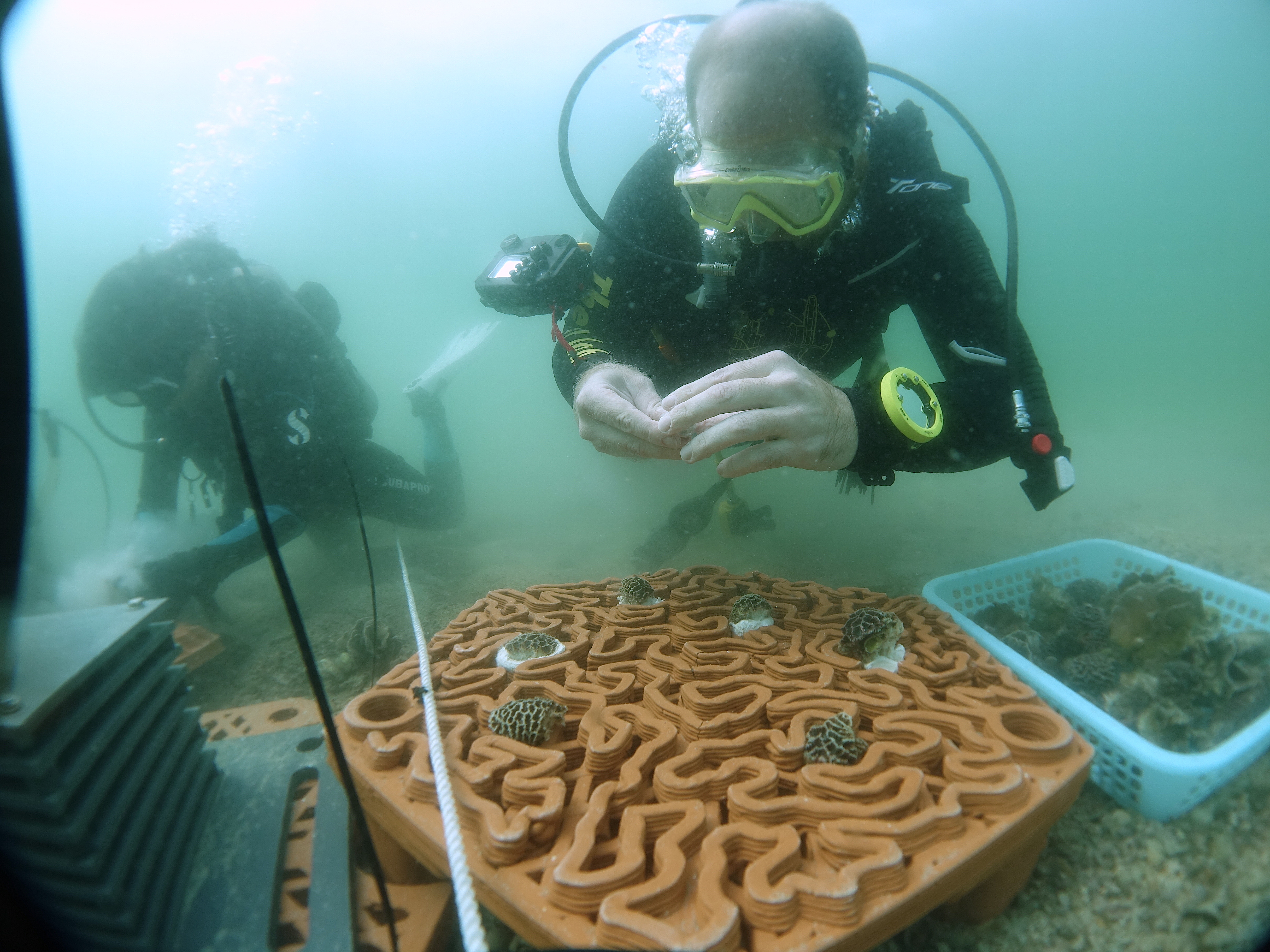
“Terracotta tiles, like roofing tiles or floor tiles, have been used by scientists for more than a century to simply understand what’s in the ocean,” says Dr. Baker. “We call them settlement tiles, and you can put them out into the ocean, and you can see what attaches to them. And terracotta has been preferred for that purpose for such a long time because it is so biocompatible.
“So we’re simply adapting some known practices, some good materials, but with a very innovative way of creating structures in three dimensions that led to this concept that archiREEF was born from.”
Although archiREEF’s tiles are focused on corals, this solution also positively affects the entire marine ecosystem.
“So, when we’re talking about coral reefs, it’s not only about corals but also it’s the photosynthetic efficiency of the ecosystem services that they provide,” explains Yu.
The solution also extends to coastline protection, where the effect of wave action underwater (which can cause tsunamis) is mitigated through the coral reef, protecting both marine life and human lives by providing a cushion effect.
The group currently has two sites deployed around the city. For an up-close look, you can find archiREEF’s tiles at Hoi Ha Wan Marine Park, where a tour conducted by the WWF Education Center will take visitors around to view the reefs on a glass-bottomed boat.
The environmental startup journey
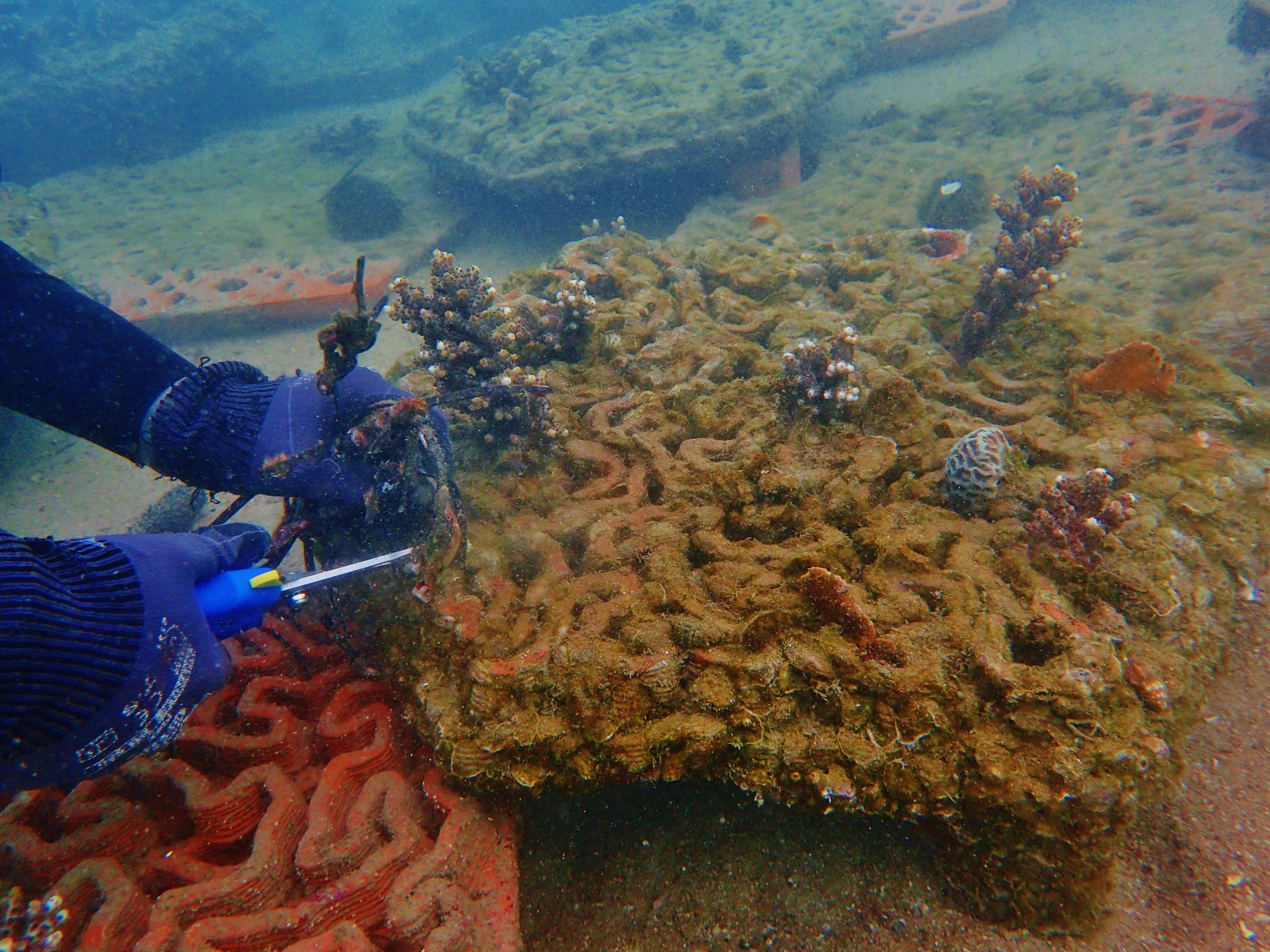
As a COVID baby and an environmental startup, archiREEF hasn’t had the easiest journey starting off. Stemming from the initial government contract, Ph.D. student Yu and HKU professor Dr. Baker teamed up to build archiREEF. First, however, they needed to find an easy way to explain the concept to potential investors and the public and develop a profitable yet “kind” way to operate.
Tekerek says: “I think that one of the things that we’ve started looking at is creating a business model that’s so digestible that it explains itself, and I think we’re sort of halfway on the road to that essentially.”
One way of rounding up corporate support for archiREEF’s work was reinventing the subscription element typical to SAAS business models. “In order for the organizations [like hotel partners] to stay a lot more connected, we introduced the subscription element, whereby they sign up to a reef and they use that as a service over a period of time,” says Tekerek.
The startup was more widely recognized when it won the Hong Kong Science and Technology Park’s (HKSTP) Elevator Pitch Competition (EPiC) in 2021. ESG, or environmental, social and corporate governance, is also an issue that more and more consumers care about, and archiREEF has accordingly been continuously focusing on communicating with clients and the public to prove its genuine, “nature-first” goal.
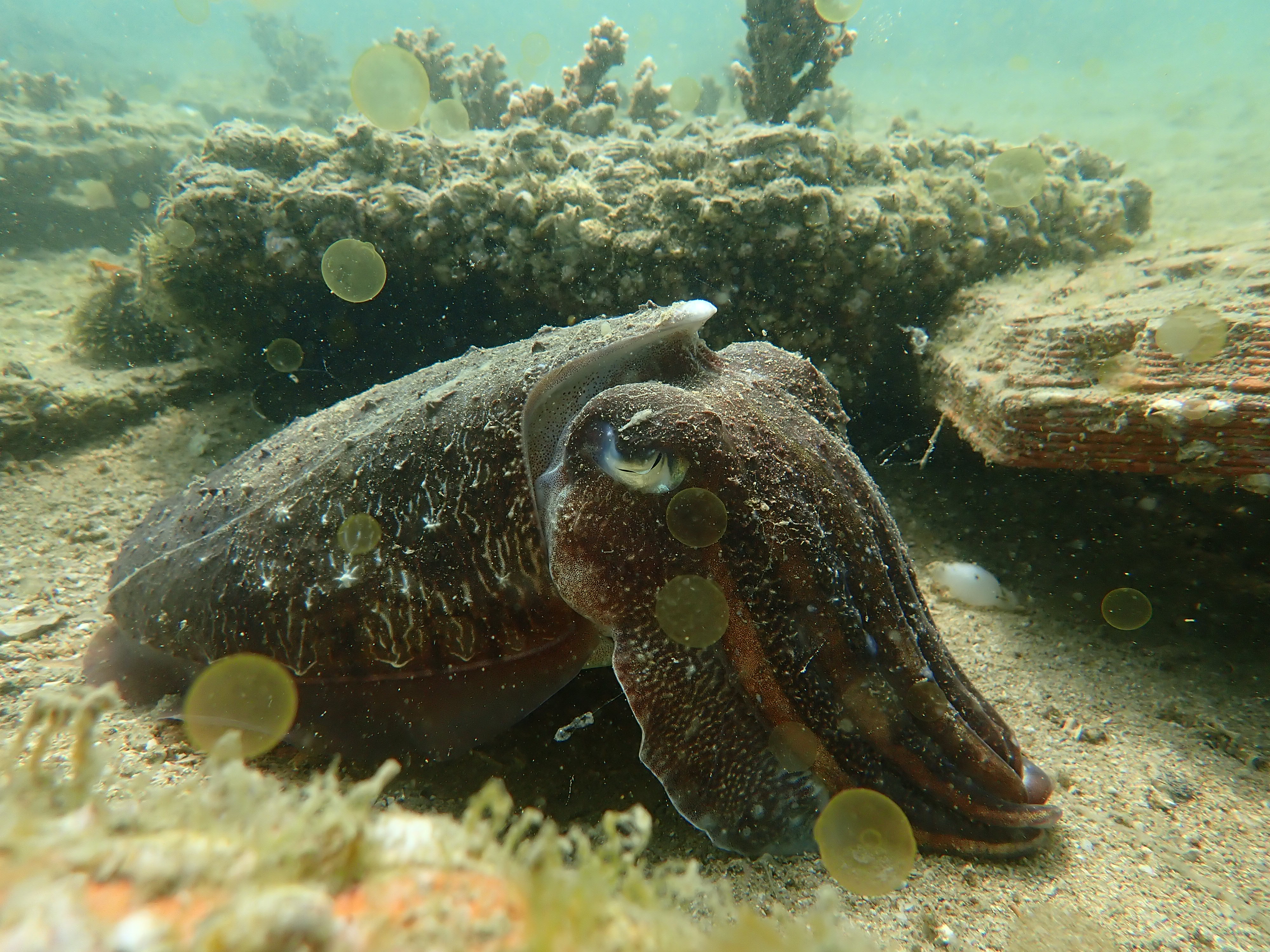
With the growth of archiREEF, the balance between science and business has also become a concern – how to run a successful environmental startup yet avoid the appearance of greenwashing? Greenwashing is when companies employ PR to advertise misleading and deceptive information to seem more environmentally friendly.
Dr. Baker points out the difficulty of finding this balance, as even some of his peers often suspect science-related businesses to be greenwashing. “So there’s a great deal of skepticism amongst the scientific community when a scientist goes into the business world,” he says.
Most within the field of science go on to pursue work distant from the business sector, such as education, NGOs and government-related work. However, Baker also believes that students have the opportunity to follow in his footsteps and achieve greater dreams through entrepreneurship and connecting with the business world.
“We’re really well positioned for students like [Yu] to get their degrees and then go on to launch a business that actually has meaningful benefits to the environment,” he says. “And that’s precisely what the country is looking for, now.”
Dr. Baker pushes students to use their scientific knowledge as a powerful tool.
“Scientific knowledge and the lack of it globally is part of the reason why we’re in this epic pandemic mess, and I believe if we push toward having more people who are trained in the scientific method in important positions of power or in business, then we can make the world a better place.”
What’s next for archiREEF?
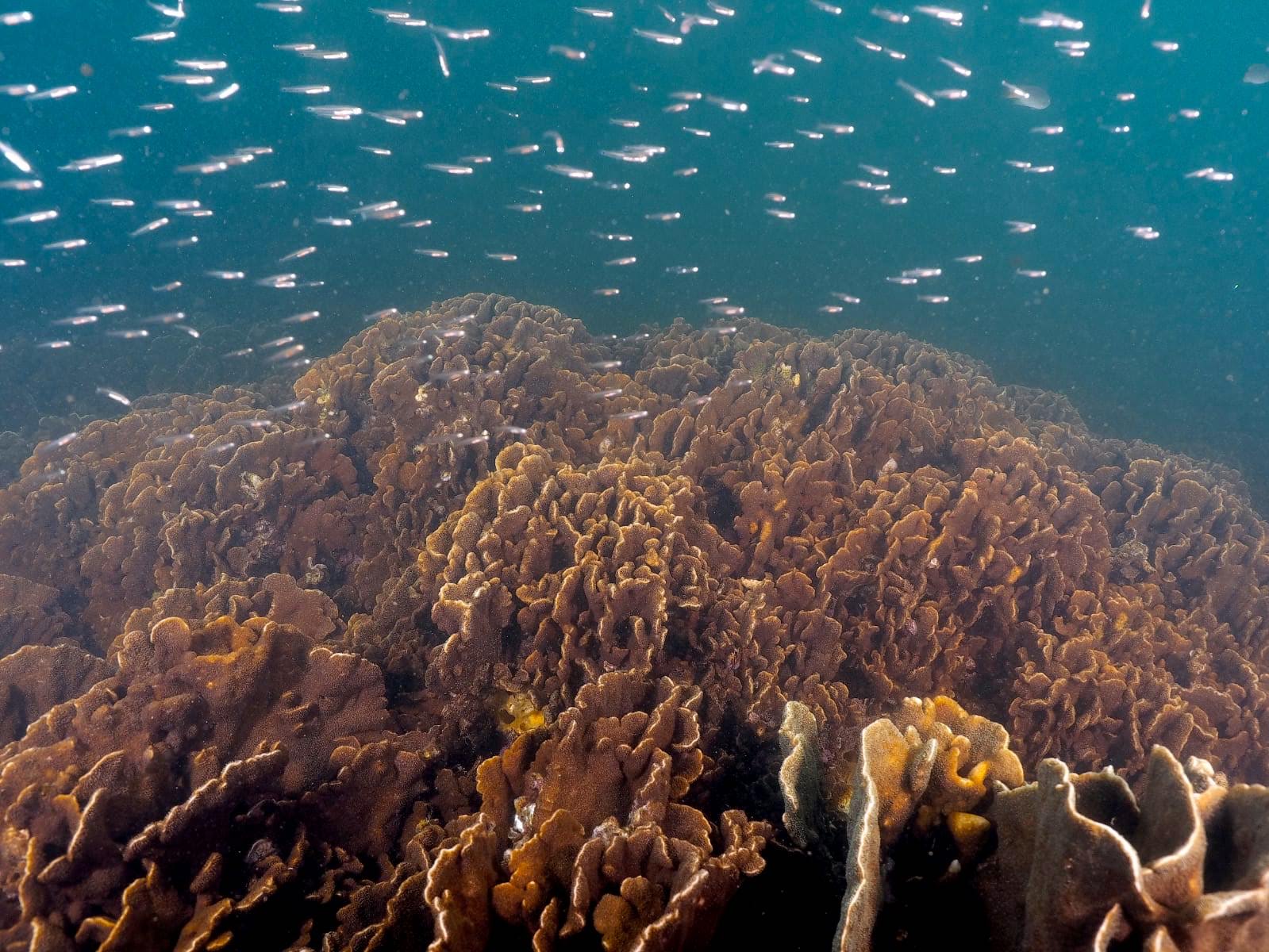
With this, archiREEF is expanding its business to Abu Dhabi to set up a new production facility. While Hong Kong will remain archiREEF’s research and development hub, additional operations and team members will support Abu Dhabi as the first deployment site outside of Hong Kong.
Within the next year, archiREEF is aiming at bigger goals, specifically to expand its role from a coral reef company to a marine ecology company. “So anything you can see from the reef to the coast, anything that’s in between, there is something that we are working on,” Tekerek elaborates.
“Our goal is really to build dynamic marine ecosystems. So it’s not limited to coral reefs, it’s also about our coastline and mangroves, oysters,” Yu adds. “Our solution can also be adapted to different marine ecosystems, which are also under threat. That would be also part of [it] and also, in cooperation [with] other technologies, making marine ecosystem restoration more accessible, more reachable by the larger audience.”
Among many areas the team hopes to penetrate, Dr. Baker highlights that many of them are responsible for “blue carbon sequestration,” explaining, “That’s the recognition that marine plant communities are actually incredibly important, disproportionately important for climate change mitigation through nature-based solutions.
“And so the challenge that we have is how do we become a player in that emerging field using our technologies, but in a very scalable way, such that we can help aid in the restoration of the so-called blue carbon ecosystems? So I think that’s really one of our key priorities for the future.”




Comments ()